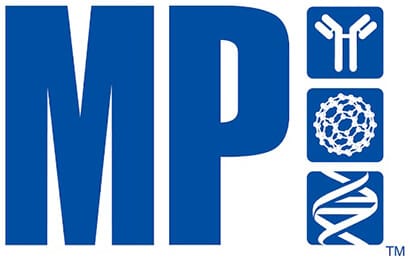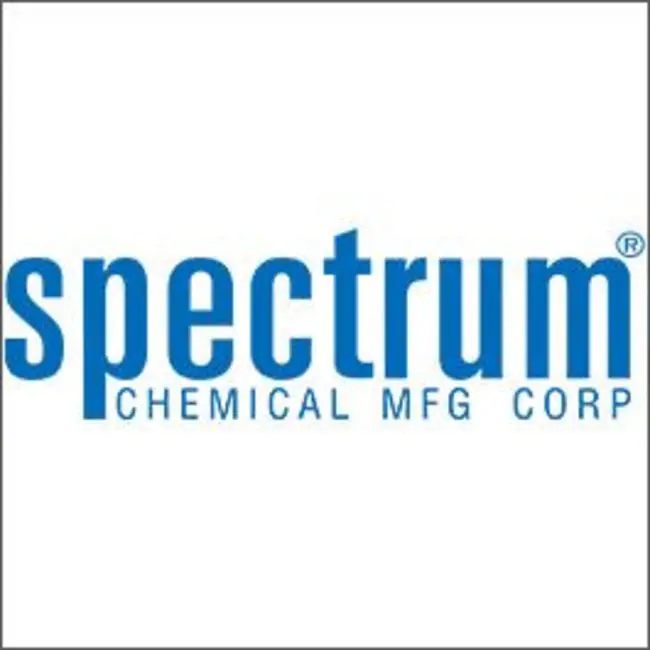GenScript Biotech
Showing 651–700 of 2554 results
-
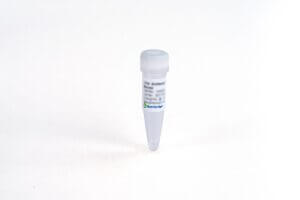
CRP (2R4), mAb, Mouse
$388.13 Add to cart View Product DetailsC-reactive protein (CRP) is synthesized in the liver by macrophage. Its level in blood increases when inflammation occurs. CRP serves as a useful marker for diagnosis of inflammation. High-sensitivity C-reactive protein (hsCRP), can serve as a risk marker for the diagnosis of myocardial infarction, ischemic stroke, peripheral vascular disease. Measuring hsCRP in blood is helpful to provide positive treatment of the disease.
-

CRP (2R4), mAb, Mouse
$3,363.75 Add to cart View Product DetailsC-reactive protein (CRP) is synthesized in the liver by macrophage. Its level in blood increases when inflammation occurs. CRP serves as a useful marker for diagnosis of inflammation. High-sensitivity C-reactive protein (hsCRP), can serve as a risk marker for the diagnosis of myocardial infarction, ischemic stroke, peripheral vascular disease. Measuring hsCRP in blood is helpful to provide positive treatment of the disease.
-

CRP (5D2), mAb, Mouse
$73.87 Add to cart View Product DetailsC-reactive protein (CRP) is synthesized in the liver by macrophage. Its level in blood increases when inflammation occurs. CRP serves as a useful marker for diagnosis of inflammation. High-sensitivity C-reactive protein (hsCRP), can serve as a risk marker for the diagnosis of myocardial infarction, ischemic stroke, peripheral vascular disease. Measuring hsCRP in blood is helpful to provide positive treatment of the disease.
-

CRP (5D2), mAb, Mouse
$528.81 Add to cart View Product DetailsC-reactive protein (CRP) is synthesized in the liver by macrophage. Its level in blood increases when inflammation occurs. CRP serves as a useful marker for diagnosis of inflammation. High-sensitivity C-reactive protein (hsCRP), can serve as a risk marker for the diagnosis of myocardial infarction, ischemic stroke, peripheral vascular disease. Measuring hsCRP in blood is helpful to provide positive treatment of the disease.
-

CRP (5D2), mAb, Mouse
$4,320.02 Add to cart View Product DetailsC-reactive protein (CRP) is synthesized in the liver by macrophage. Its level in blood increases when inflammation occurs. CRP serves as a useful marker for diagnosis of inflammation. High-sensitivity C-reactive protein (hsCRP), can serve as a risk marker for the diagnosis of myocardial infarction, ischemic stroke, peripheral vascular disease. Measuring hsCRP in blood is helpful to provide positive treatment of the disease.
-

CS1/CRACC/SLAMF7, His & Avi, Human
$172.50 Add to cart View Product DetailsCD2-like receptor activating cytotoxic cells (CRACC), also known as CS1, novel Ly9, SLAMF7, and CD319, is a 65-75 kDa type I transmembrane glycoprotein in the SLAM subgroup of the CD2 family, a self-ligand receptor of the signaling lymphocytic activation molecule (SLAM) family. SLAM receptors triggered by homo- or heterotypic cell-cell interactions are modulating the activation and differentiation of a wide variety of immune cells and thus are involved in the regulation and interconnection of both innate and adaptive immune responses.
-

CTLA-4 Fc Chimera, Human
$560.63 Add to cart View Product DetailsCytotoxic T lymphocyte-associated molecule-4 (CTLA-4) is a cell surface molecule that is closely related to CD28, and a powerful negative regulator of T cell activation. Structurally, CTLA-4 is a member of the Ig superfamily, having a single extracellular V-like domain , homology with CD28; The overall sequence homology between CD28 and CTLA-4 is about 20%, but they share a 27% (murine) to 31% (human) identity at the amino acid level. Inhibitory receptor acting as a major negative regulator of T-cell responses. The affinity of CTLA-4 for its natural B7 family ligands, CD80 and CD86, is considerably stronger than the affinity of their cognate stimulatory coreceptor CD28.
-

CTLA-4 Fc Chimera, Human
$56.06 Add to cart View Product DetailsCytotoxic T lymphocyte-associated molecule-4 (CTLA-4) is a cell surface molecule that is closely related to CD28, and a powerful negative regulator of T cell activation. Structurally, CTLA-4 is a member of the Ig superfamily, having a single extracellular V-like domain , homology with CD28; The overall sequence homology between CD28 and CTLA-4 is about 20%, but they share a 27% (murine) to 31% (human) identity at the amino acid level. Inhibitory receptor acting as a major negative regulator of T-cell responses. The affinity of CTLA-4 for its natural B7 family ligands, CD80 and CD86, is considerably stronger than the affinity of their cognate stimulatory coreceptor CD28.
-
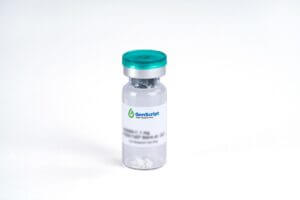
CTLA-4 Fc Chimera, Mouse
$560.63 Add to cart View Product DetailsCTLA-4 (Cytotoxic T-Lymphocyte Antigen 4) is also known as CD152, is an Inhibitory receptor acting as a major negative regulator of T-cell responses. CTLA-4 is a member of the immunoglobulin superfamily, which is expressed on the surface of T cells and transmits an inhibitory signal to T cells. CTLA-4 and CD28 are homologous receptors expressed by both CD4+ and CD8+ T cells, which mediate opposing functions in T-cell activation. Both receptors share a pair of ligands expressed on the surface of antigen-presenting cells (APCs). The affinity of CTLA-4 for its natural B7 family ligands, CD80 and CD86, is considerably stronger than the affinity of their cognate stimulatory co-receptor CD28.
-
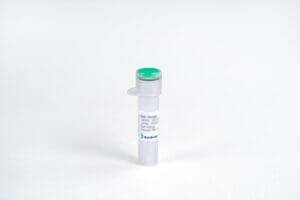
CTLA-4 Fc Chimera, Mouse
$50.03 Add to cart View Product DetailsCTLA-4 (Cytotoxic T-Lymphocyte Antigen 4) is also known as CD152, is an Inhibitory receptor acting as a major negative regulator of T-cell responses. CTLA-4 is a member of the immunoglobulin superfamily, which is expressed on the surface of T cells and transmits an inhibitory signal to T cells. CTLA-4 and CD28 are homologous receptors expressed by both CD4+ and CD8+ T cells, which mediate opposing functions in T-cell activation. Both receptors share a pair of ligands expressed on the surface of antigen-presenting cells (APCs). The affinity of CTLA-4 for its natural B7 family ligands, CD80 and CD86, is considerably stronger than the affinity of their cognate stimulatory co-receptor CD28.
-

cTnI (24E40HC)
$139.73 Add to cart View Product DetailsCardiac Troponin I (cTnI) is synthesized in cardiac muscle and forms a structural complex with Troponin T and C. Its concentration in blood increases after the onset of chest pain and maintains peak for a couple of weeks. The cTnI protein is considered as useful diagnosis marker for acute myocardial infarction (AMI).
-

cTnI (24E40HC)
$1,397.25 Add to cart View Product DetailsCardiac Troponin I (cTnI) is synthesized in cardiac muscle and forms a structural complex with Troponin T and C. Its concentration in blood increases after the onset of chest pain and maintains peak for a couple of weeks. The cTnI protein is considered as useful diagnosis marker for acute myocardial infarction (AMI).
-

cTnI (24E40HC)
$11,902.50 Add to cart View Product DetailsCardiac Troponin I (cTnI) is synthesized in cardiac muscle and forms a structural complex with Troponin T and C. Its concentration in blood increases after the onset of chest pain and maintains peak for a couple of weeks. The cTnI protein is considered as useful diagnosis marker for acute myocardial infarction (AMI).
-

cTnI (32CD), mAb, Mouse
$139.73 Add to cart View Product DetailsCardiac Troponin I (cTnI) is synthesized in cardiac muscle and forms a structural complex with Troponin T and C. Its concentration in blood increases after the onset of chest pain and maintains peak for a couple of weeks. The cTnI protein is considered as useful diagnosis marker for acute myocardial infarction (AMI).
-

cTnI (32CD), mAb, Mouse
$1,397.25 Add to cart View Product DetailsCardiac Troponin I (cTnI) is synthesized in cardiac muscle and forms a structural complex with Troponin T and C. Its concentration in blood increases after the onset of chest pain and maintains peak for a couple of weeks. The cTnI protein is considered as useful diagnosis marker for acute myocardial infarction (AMI).
-

cTnI (32CD), mAb, Mouse
$80,643.75 Add to cart View Product DetailsCardiac Troponin I (cTnI) is synthesized in cardiac muscle and forms a structural complex with Troponin T and C. Its concentration in blood increases after the onset of chest pain and maintains peak for a couple of weeks. The cTnI protein is considered as useful diagnosis marker for acute myocardial infarction (AMI).
-

cTnI (5C7), mAb, Mouse
$139.73 Add to cart View Product DetailsCardiac Troponin I (cTnI) is synthesized in cardiac muscle and forms a structural complex with Troponin T and C. Its concentration in blood increases after the onset of chest pain and maintains peak for a couple of weeks. The cTnI protein is considered as useful diagnosis marker for acute myocardial infarction (AMI).
-

cTnI (5C7), mAb, Mouse
$1,397.25 Add to cart View Product DetailsCardiac Troponin I (cTnI) is synthesized in cardiac muscle and forms a structural complex with Troponin T and C. Its concentration in blood increases after the onset of chest pain and maintains peak for a couple of weeks. The cTnI protein is considered as useful diagnosis marker for acute myocardial infarction (AMI).
-

cTnI (5C7), mAb, Mouse
$11,902.50 Add to cart View Product DetailsCardiac Troponin I (cTnI) is synthesized in cardiac muscle and forms a structural complex with Troponin T and C. Its concentration in blood increases after the onset of chest pain and maintains peak for a couple of weeks. The cTnI protein is considered as useful diagnosis marker for acute myocardial infarction (AMI).
-

cTnI (5C7HC)
$139.73 Add to cart View Product DetailsCardiac Troponin I (cTnI) is synthesized in cardiac muscle and forms a structural complex with Troponin T and C. Its concentration in blood increases after the onset of chest pain and maintains peak for a couple of weeks. The cTnI protein is considered as useful diagnosis marker for acute myocardial infarction (AMI).
-

cTnI (5C7HC)
$1,397.25 Add to cart View Product DetailsCardiac Troponin I (cTnI) is synthesized in cardiac muscle and forms a structural complex with Troponin T and C. Its concentration in blood increases after the onset of chest pain and maintains peak for a couple of weeks. The cTnI protein is considered as useful diagnosis marker for acute myocardial infarction (AMI).
-

cTnI (5C7HC)
$11,902.50 Add to cart View Product DetailsCardiac Troponin I (cTnI) is synthesized in cardiac muscle and forms a structural complex with Troponin T and C. Its concentration in blood increases after the onset of chest pain and maintains peak for a couple of weeks. The cTnI protein is considered as useful diagnosis marker for acute myocardial infarction (AMI).
-

cTnI (6D11), mAb, Mouse
$139.73 Add to cart View Product DetailsCardiac Troponin I (cTnI) is synthesized in cardiac muscle and forms a structural complex with Troponin T and C. Its concentration in blood increases after the onset of chest pain and maintains peak for a couple of weeks. The cTnI protein is considered as useful diagnosis marker for acute myocardial infarction (AMI).
-

cTnI (6D11), mAb, Mouse
$1,397.25 Add to cart View Product DetailsCardiac Troponin I (cTnI) is synthesized in cardiac muscle and forms a structural complex with Troponin T and C. Its concentration in blood increases after the onset of chest pain and maintains peak for a couple of weeks. The cTnI protein is considered as useful diagnosis marker for acute myocardial infarction (AMI).
-

cTnI (6D11), mAb, Mouse
$11,902.50 Add to cart View Product DetailsCardiac Troponin I (cTnI) is synthesized in cardiac muscle and forms a structural complex with Troponin T and C. Its concentration in blood increases after the onset of chest pain and maintains peak for a couple of weeks. The cTnI protein is considered as useful diagnosis marker for acute myocardial infarction (AMI).
-

cTnT (25C11), mAb, Mouse
$144.04 Add to cart View Product DetailsCardiac TnT (cTnT) is the largest subunit of the troponin complex which is composed of cTnT, troponin I (TnI), troponin C (TnC). It is encoded by the TNNT2 gene with a calculated molecular weight of 34.6 kDa. The cTnT is considered as a useful biomarker for the diagnosis of acute myocardial infarction.
-

cTnT (25C11), mAb, Mouse
$1,440.38 Add to cart View Product DetailsCardiac TnT (cTnT) is the largest subunit of the troponin complex which is composed of cTnT, troponin I (TnI), troponin C (TnC). It is encoded by the TNNT2 gene with a calculated molecular weight of 34.6 kDa. The cTnT is considered as a useful biomarker for the diagnosis of acute myocardial infarction.
-

cTnT (25C11), mAb, Mouse
$12,247.50 Add to cart View Product DetailsCardiac TnT (cTnT) is the largest subunit of the troponin complex which is composed of cTnT, troponin I (TnI), troponin C (TnC). It is encoded by the TNNT2 gene with a calculated molecular weight of 34.6 kDa. The cTnT is considered as a useful biomarker for the diagnosis of acute myocardial infarction.
-

cTnT (26D7), mAb, Mouse
$144.04 Add to cart View Product DetailsCardiac TnT (cTnT) is the largest subunit of the troponin complex which is composed of cTnT, troponin I (TnI), troponin C (TnC). It is encoded by the TNNT2 gene with a calculated molecular weight of 34.6 kDa. The cTnT is considered as a useful biomarker for the diagnosis of acute myocardial infarction.
-

cTnT (26D7), mAb, Mouse
$1,440.38 Add to cart View Product DetailsCardiac TnT (cTnT) is the largest subunit of the troponin complex which is composed of cTnT, troponin I (TnI), troponin C (TnC). It is encoded by the TNNT2 gene with a calculated molecular weight of 34.6 kDa. The cTnT is considered as a useful biomarker for the diagnosis of acute myocardial infarction.
-

cTnT (26D7), mAb, Mouse
$12,247.50 Add to cart View Product DetailsCardiac TnT (cTnT) is the largest subunit of the troponin complex which is composed of cTnT, troponin I (TnI), troponin C (TnC). It is encoded by the TNNT2 gene with a calculated molecular weight of 34.6 kDa. The cTnT is considered as a useful biomarker for the diagnosis of acute myocardial infarction.
-

CXCL10, Mouse
$2,238.19 Add to cart View Product DetailsCXCL10 also known as IP-10 is belonging to the CXC chemokine family. It is encoded by the CXCL10 gene, and in murine it is also named the CRG-2 gene. The gene was originally identified as an immediate early gene induced in response to macrophage activation. This chemokine elicits its effects by binding to the cell surface chemokine receptor CXCR3. CXCL10 has been shown to be a chemoattractant for activated T-lymphocytes and monocytes/macrophages. It also has other roles, such as promotion of T cell adhesion to endothelial cells, and inhibition of bone marrow colony formation and angiogenesis. Murine CXCL10 shares approximately 67 % amino acid sequence identity with human CXCL10.
-

CXCL10, Mouse
$452.81 Add to cart View Product DetailsCXCL10 also known as IP-10 is belonging to the CXC chemokine family. It is encoded by the CXCL10 gene, and in murine it is also named the CRG-2 gene. The gene was originally identified as an immediate early gene induced in response to macrophage activation. This chemokine elicits its effects by binding to the cell surface chemokine receptor CXCR3. CXCL10 has been shown to be a chemoattractant for activated T-lymphocytes and monocytes/macrophages. It also has other roles, such as promotion of T cell adhesion to endothelial cells, and inhibition of bone marrow colony formation and angiogenesis. Murine CXCL10 shares approximately 67 % amino acid sequence identity with human CXCL10.
-

CXCL11, Human
$2,238.19 Add to cart View Product DetailsCXCL11 also known as I-TAC is belonging to the CXC chemokine family and shares 36 % and 37 % amino acid sequence homology with IP-10 and MIG, respectively. It is highly expressed in peripheral blood leukocytes, pancreas and liver. Expression of CXCL11 is strongly induced by IFN-γ and IFN-β, and weakly induced by IFN-α. This chemokine elicits its effects by binding to the cell surface chemokine receptor CXCR3, which with a higher affinity than do the other chemokines for this receptor, CXCL9 and CXCL10. Similar to CXCL10, CXCL11 has been shown to be a chemoattractant for IL-2-activated T-lymphocytes, but not for isolated T-cells, neutrophils or monocytes.
-

CXCL11, Human
$452.81 Add to cart View Product DetailsCXCL11 also known as I-TAC is belonging to the CXC chemokine family and shares 36 % and 37 % amino acid sequence homology with IP-10 and MIG, respectively. It is highly expressed in peripheral blood leukocytes, pancreas and liver. Expression of CXCL11 is strongly induced by IFN-γ and IFN-β, and weakly induced by IFN-α. This chemokine elicits its effects by binding to the cell surface chemokine receptor CXCR3, which with a higher affinity than do the other chemokines for this receptor, CXCL9 and CXCL10. Similar to CXCL10, CXCL11 has been shown to be a chemoattractant for IL-2-activated T-lymphocytes, but not for isolated T-cells, neutrophils or monocytes.
-

D-dimer (15C18), mAb, Mouse
$104.36 Add to cart View Product DetailsD-dimer known as a fibrin degradation product, is presented in blood after a blood clot is degraded by fibrinolysis. Its concentration in blood increases when deep venous thrombosis (DVT), pulmonary embolism (PE) or disseminated intravascular coagulation (DIC) happens. It serves as a useful maker for the diagnosis of these diseases.
-

D-dimer (15C18), mAb, Mouse
$1,043.63 Add to cart View Product DetailsD-dimer known as a fibrin degradation product, is presented in blood after a blood clot is degraded by fibrinolysis. Its concentration in blood increases when deep venous thrombosis (DVT), pulmonary embolism (PE) or disseminated intravascular coagulation (DIC) happens. It serves as a useful maker for the diagnosis of these diseases.
-

D-dimer (15C18), mAb, Mouse
$8,883.75 Add to cart View Product DetailsD-dimer known as a fibrin degradation product, is presented in blood after a blood clot is degraded by fibrinolysis. Its concentration in blood increases when deep venous thrombosis (DVT), pulmonary embolism (PE) or disseminated intravascular coagulation (DIC) happens. It serves as a useful maker for the diagnosis of these diseases.
-

D-dimer (16D25), mAb, Mouse
$104.36 Add to cart View Product DetailsD-dimer known as a fibrin degradation product, is presented in blood after a blood clot is degraded by fibrinolysis. Its concentration in blood increases when deep venous thrombosis (DVT), pulmonary embolism (PE) or disseminated intravascular coagulation (DIC) happens. It serves as a useful maker for the diagnosis of these diseases.
-

D-dimer (16D25), mAb, Mouse
$1,043.63 Add to cart View Product DetailsD-dimer known as a fibrin degradation product, is presented in blood after a blood clot is degraded by fibrinolysis. Its concentration in blood increases when deep venous thrombosis (DVT), pulmonary embolism (PE) or disseminated intravascular coagulation (DIC) happens. It serves as a useful maker for the diagnosis of these diseases.
-

D-dimer (16D25), mAb, Mouse
$8,883.75 Add to cart View Product DetailsD-dimer known as a fibrin degradation product, is presented in blood after a blood clot is degraded by fibrinolysis. Its concentration in blood increases when deep venous thrombosis (DVT), pulmonary embolism (PE) or disseminated intravascular coagulation (DIC) happens. It serves as a useful maker for the diagnosis of these diseases.
-

D-dimer (18D4), mAb, Mouse
$104.36 Add to cart View Product DetailsD-dimer known as a fibrin degradation product, is presented in blood after a blood clot is degraded by fibrinolysis. Its concentration in blood increases when deep venous thrombosis (DVT), pulmonary embolism (PE) or disseminated intravascular coagulation (DIC) happens. It serves as a useful maker for the diagnosis of these diseases.
-

D-dimer (18D4), mAb, Mouse
$1,043.63 Add to cart View Product DetailsD-dimer known as a fibrin degradation product, is presented in blood after a blood clot is degraded by fibrinolysis. Its concentration in blood increases when deep venous thrombosis (DVT), pulmonary embolism (PE) or disseminated intravascular coagulation (DIC) happens. It serves as a useful maker for the diagnosis of these diseases.
-

D-dimer (18D4), mAb, Mouse
$8,883.75 Add to cart View Product DetailsD-dimer known as a fibrin degradation product, is presented in blood after a blood clot is degraded by fibrinolysis. Its concentration in blood increases when deep venous thrombosis (DVT), pulmonary embolism (PE) or disseminated intravascular coagulation (DIC) happens. It serves as a useful maker for the diagnosis of these diseases.
-

D-dimer (1F3), mAb, Mouse
$104.36 Add to cart View Product DetailsD-dimer known as a fibrin degradation product, is presented in blood after a blood clot is degraded by fibrinolysis. Its concentration in blood increases when deep venous thrombosis (DVT), pulmonary embolism (PE) or disseminated intravascular coagulation (DIC) happens. It serves as a useful maker for the diagnosis of these diseases.
-

D-dimer (1F3), mAb, Mouse
$1,043.63 Add to cart View Product DetailsD-dimer known as a fibrin degradation product, is presented in blood after a blood clot is degraded by fibrinolysis. Its concentration in blood increases when deep venous thrombosis (DVT), pulmonary embolism (PE) or disseminated intravascular coagulation (DIC) happens. It serves as a useful maker for the diagnosis of these diseases.
-

D-dimer (1F3), mAb, Mouse
$8,883.75 Add to cart View Product DetailsD-dimer known as a fibrin degradation product, is presented in blood after a blood clot is degraded by fibrinolysis. Its concentration in blood increases when deep venous thrombosis (DVT), pulmonary embolism (PE) or disseminated intravascular coagulation (DIC) happens. It serves as a useful maker for the diagnosis of these diseases.
-

dATP (100 mM) ≥99% HPLC
$44.85 Add to cart View Product DetailsdATP (100 mM) ≥99% HPLC
-

dATP (100 mM) ≥99% HPLC
$357.08 Add to cart View Product DetailsdATP (100 mM) ≥99% HPLC
-

dATP (100 mM) ≥99% HPLC
$7,439.06 Add to cart View Product DetailsdATP (100 mM) ≥99% HPLC



